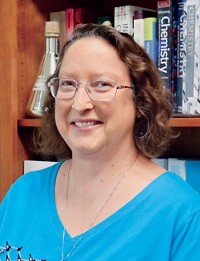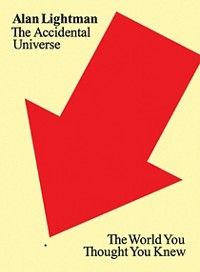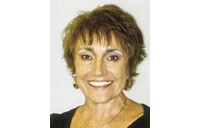Advertisement
Grab your lab coat. Let's get started
Welcome!
Welcome!
Create an account below to get 6 C&EN articles per month, receive newsletters and more - all free.
It seems this is your first time logging in online. Please enter the following information to continue.
As an ACS member you automatically get access to this site. All we need is few more details to create your reading experience.
Not you? Sign in with a different account.
Not you? Sign in with a different account.
ERROR 1
ERROR 1
ERROR 2
ERROR 2
ERROR 2
ERROR 2
ERROR 2
Password and Confirm password must match.
If you have an ACS member number, please enter it here so we can link this account to your membership. (optional)
ERROR 2
ACS values your privacy. By submitting your information, you are gaining access to C&EN and subscribing to our weekly newsletter. We use the information you provide to make your reading experience better, and we will never sell your data to third party members.
Physical Chemistry
Forget Chemistry
by Robert L. Wolke
August 28, 2006
| A version of this story appeared in
Volume 84, Issue 35
This guest editorial is by Robert L. Wolke, professor emeritus of chemistry, University of Pittsburgh, and author of numerous books and articles on the science of food and cooking.
In our efforts to swell the ebbing stream of students choosing chemical careers, we may be trying too hard. We may put our faith in exposing children to chemistry at an early age, in hopes that they will catch the "chemistry bug" before it (and they) are barely out of the larval stage.
But the usual children's enticements often turn out to be little more than magic shows that, frankly, generate little or no excitement about careers in chemistry. Let's face it: Neither colored liquids nor fizzing baking soda are as fascinating to kids as the insides of a salamander or a black hole. A general captivation by Nature must be instilled before we can expect children to "specialize" in chemistry.
The funnel that leads to chemical careers can have a very wide top. To collect more chemists at the bottom, we must pour more young science fans, not just chemistry fans, into the top. As more and more children are turned on to a broad array of natural wonders, they will sort themselves out while passing through the educational funnel, and a fair proportion will inevitably wind up in the chemical sciences.
Among the most effective venues for instilling a general interest in science are the so-called science centers, which demonstrate scientific phenomena through the use of hands-on, interactive participation. (A list of science centers around the world can be found at www.cs.cmu.edu/~mwm/sci.html.) And let's face it (again): It's not as easy to design an interactive exhibit of a chemical phenomenon as it is a physical one, so chemistry is inevitably underrepresented. But that need not be a problem.
Being what a colleague calls a "recovering academic," I like to visit science centers whenever the opportunity arises to assess the educational job they are doing. It's a job that cannot be done by traditional museums, merely recounting history and displaying static objects.
I find science centers have mixed success in encouraging curiosity about the world of Nature.
Typically, a science center features exhibits in which the patron pushes a button or turns a crank to make something happen. I have watched kids run up to an exhibit, push the button, see "something happen," exclaim "Cool!" and run off to turn the next crank. There are, of course, posters that explain the principles being demonstrated, but kids are kids, and their attention spans can often be measured in nanoseconds.
To be fair, I have also seen parents reading and explaining to their children. But too often, any inspiration that takes place is left to chance.
Not so, however, in the most effective science center I have been privileged to visit. I will call it Center X for now.
Center X's motto is "Nature is not to blame if man created branches of science." The science at Center X is seamless. No partitions, tangible or otherwise, separate the disciplinary fields that isolate academic science departments from one another. On my recent visit, Center X was running participatory workshops on such diverse topics as fossils; astronomy; the art of tying knots; the making of a television program; the International Space Station; 36-camera, three-dimensional self-portraits; digital microscopy; lasers and holograms; balance and equilibrium; microorganisms; cryogenics; vacuum, pressure, and force; the anatomy and physiology of bones; insects; memory; the heart; light, shadows, and rainbows; timbre, resonance, and scales; the genome; and, of course, "chemical magic."
Center X works closely with the celebrated and pace-setting Exploratorium in San Francisco and is the Exploratorium's host in Europe.
Europe? Yes, Europe. Center X is the Museu de les Ciències Príncipe Felipe (Museum of the Sciences Prince Philip) in Valencia, Spain (www.cac.es). It is part of the Ciutat de Les Arts i de las Ciències (City of Arts & Sciences), an awe-inspiring wonderland that includes a planetarium and Imax theater, the largest marine life center in Europe, and an architectural knockout of a performing arts center.
Here, then, is my heretical suggestion: Forget chemistry. Support any and all programs that feed kids' curiosity about Nature. As the borders between the sciences continue to blur, insisting that kids focus on what we have traditionally known as "chemistry" may be unproductive and may even, in the long run, miss the mark.
Views expressed on this page are those of the author and not necessarily those of ACS.





Join the conversation
Contact the reporter
Submit a Letter to the Editor for publication
Engage with us on Twitter